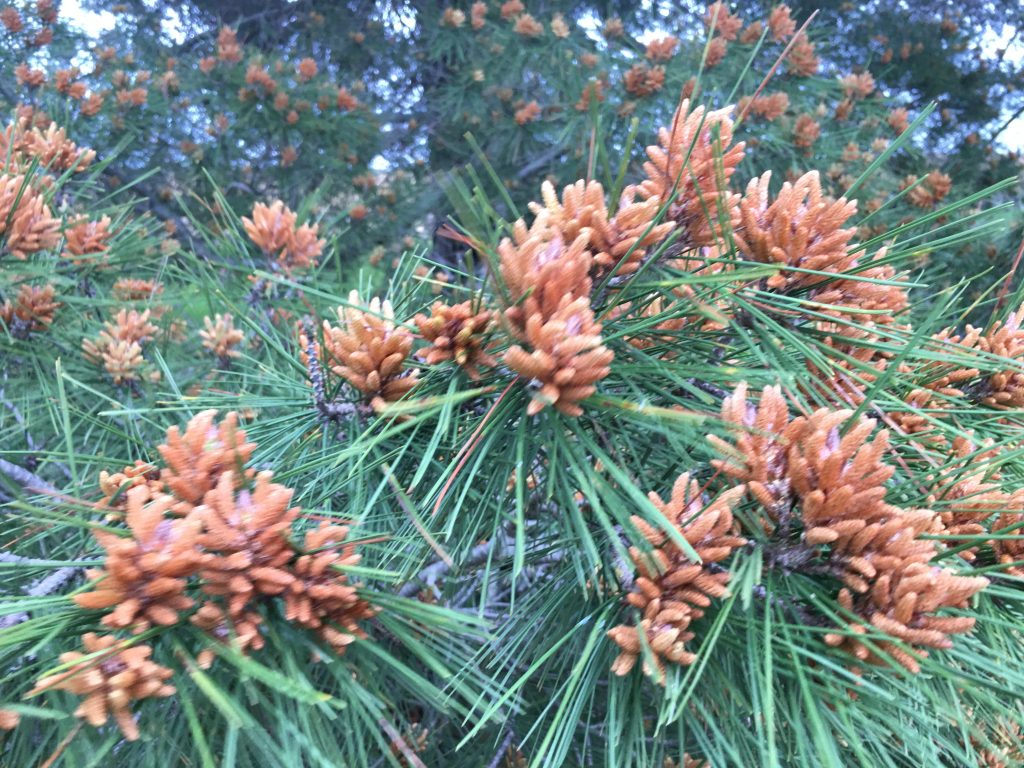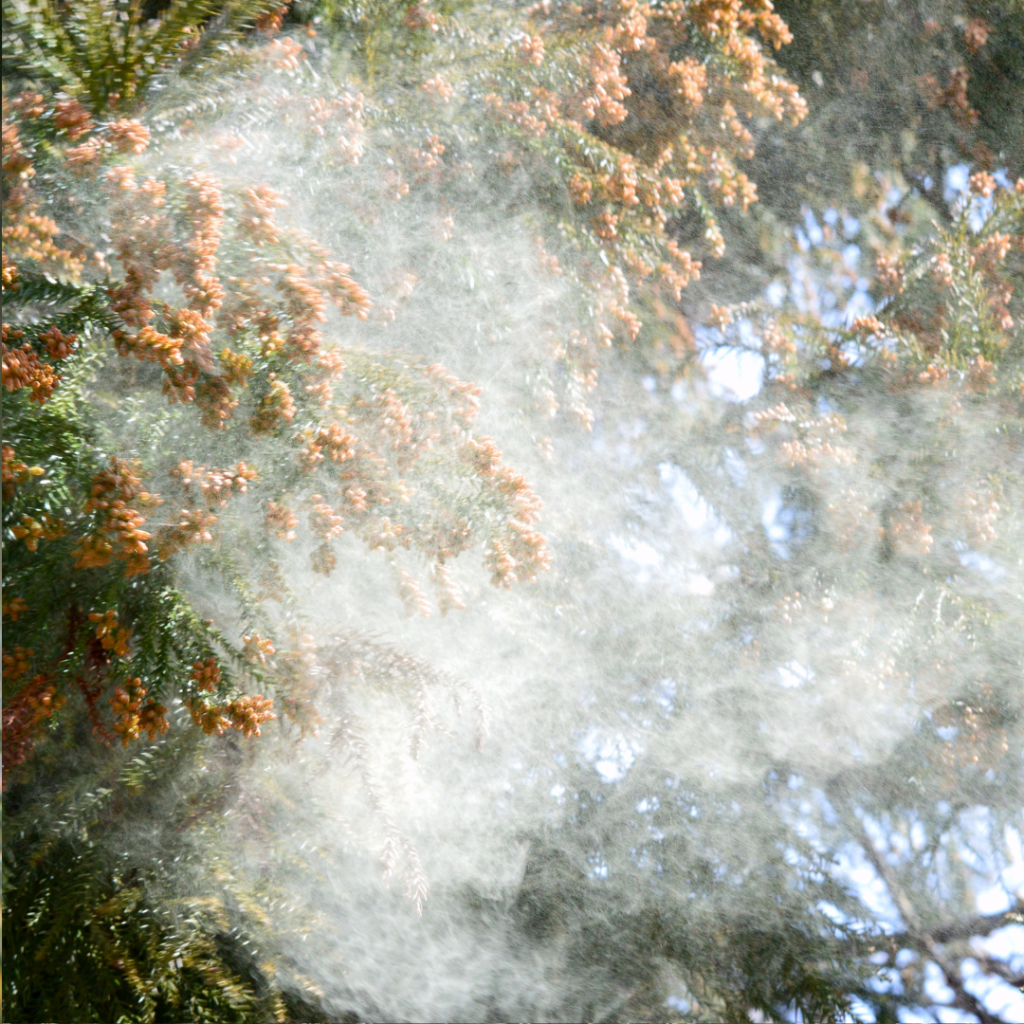
Have you noticed fine yellow dust sprinkled on everything outside lately? Our deck and vehicle are covered with gold dust, especially after a windy Spring day. Recently, we noticed how showers of rain had settled pollen on the ground. All this pollen triggers sneezes in our home. Pollen is a powdery substance produced by plants during Spring, Summer, and Autumn. Let’s start at the beginning to understand what pollen is and what it does.
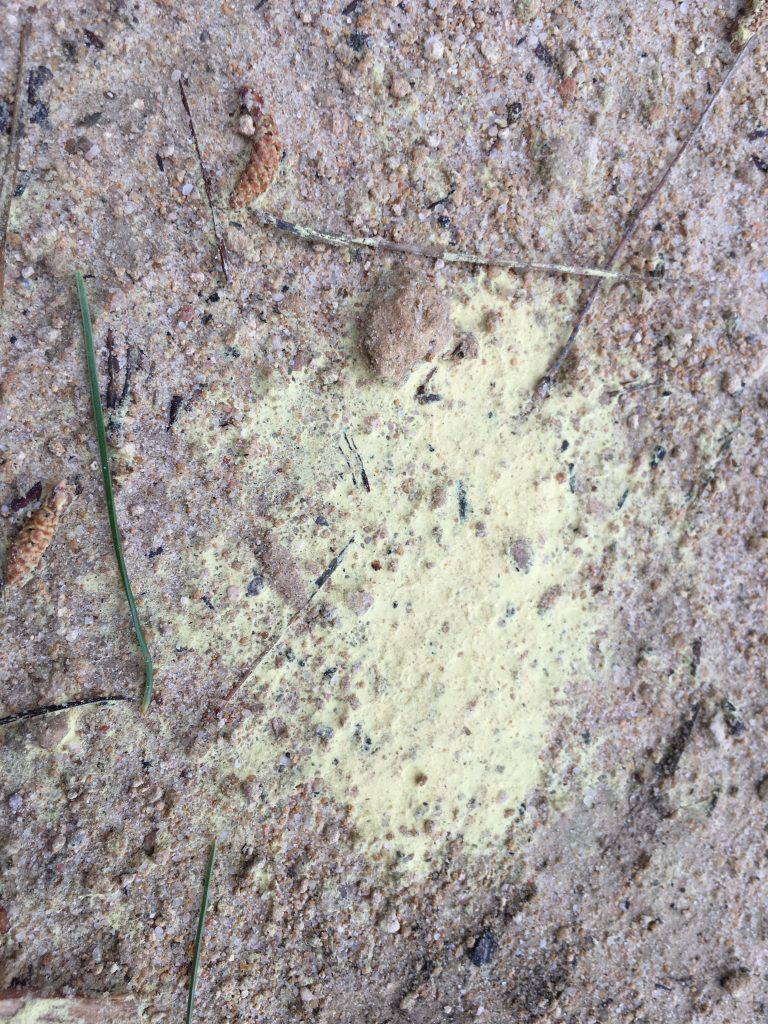
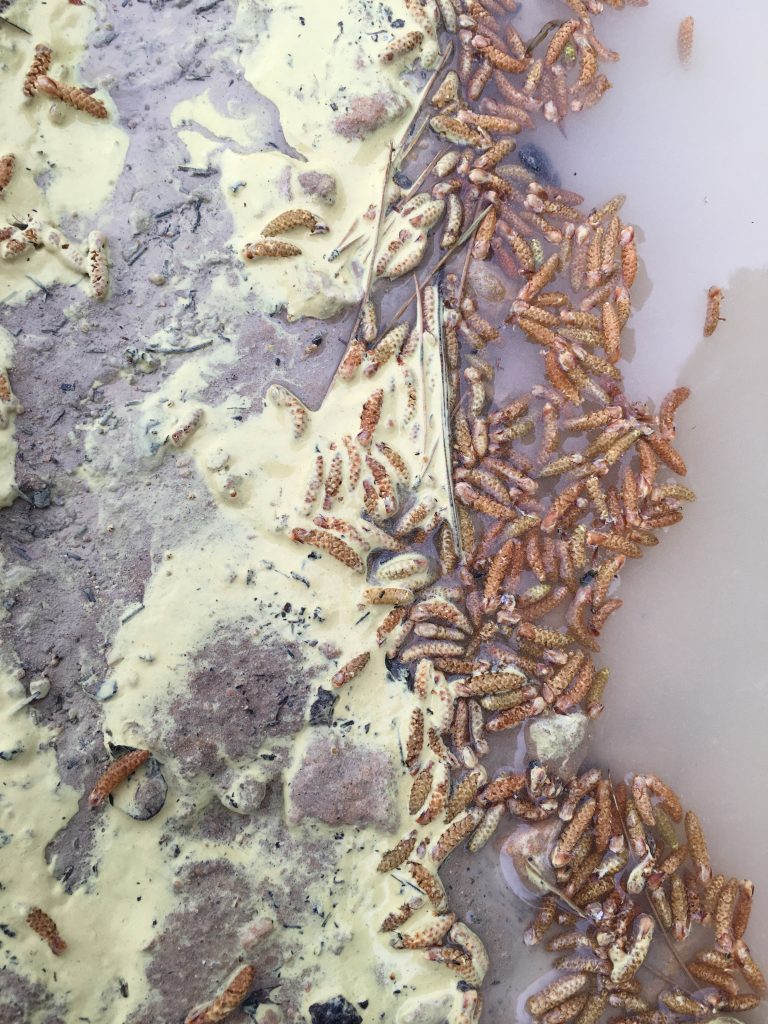
Flowers are designed to create seeds using the pollination process which is fascinating. Flowers need pollen to travel from the anther to the stigma. You’d think that since the anther and stigma are so close together, pollen will rub off naturally from one to the other, and it does with flowers that are able to self-pollinate. But it’s not common for all flowers and the process is more complex than we think. Most flowers need help from agents to spread pollen from one to the other as some plants can’t pollinate themselves.
Common pollination helpers are furry animals and tiny insects like bees and butterflies. Flowers attract pollinators with their sweet fragrance, bright colours and nectar. As the insects or animals feed on the nectar, they naturally transfer pollen to the stigma of a different plant. But this is not the pollination process that makes us sneeze, sniff and cry.
Did you know the wind is a helper in seed making too? As a plant releases pollen, the wind blows pollen into the air where it’ll glide and hopefully finally settle on another plant of the same kind. Most wind-pollinated plants release an exceptional amount of pollen into the air since this process isn’t as efficient as animal pollination. Because spring is dancing with flowers releasing pollen into the air all season long, we breathe in pollen and this causes us to say ‘Atchooo!’
Once a flower has been pollinated, the petals will begin to dry and fall off. If you enjoy flowers in your home, it’s best to cut them before they open and are pollinated as they’ll last longer in a vase. A pollinated plant will spend all its energy on creating seeds and fruit to protect and finally release them to grow more flowers, fruits, and vegetables.
So why does pollen cause allergies like hay fever and trigger asthma? Pollen is an airborne allergen, a substance that causes an allergic reaction. When someone who is susceptible to allergies is exposed to an allergen like pollen, their immune system becomes confused believing the body is being harmed. It overreacts by attacking the invader. In an effort to fight, the immune system creates antibodies called immunoglobulin E (IgE), causing cells to release chemicals into the bloodstream that cause allergic reactions that affect the eyes, nose, throat, lungs and skin.
Pollen has a vital role in plant reproduction and the production of food. It is an important, intricate yellow spot. So let’s take a closer look. Beautifully designed natural structures like the beehive, fractal patterns on seashells, or the Fibonacci Sequence found in sunflowers are only a few patterns we can see. But the microscopic world is teeming with amazing patterns like pollen grains that are designed with individual geometric patterns. Each kind of pollen grain has its own unique pattern, much like a fingerprint. So amazing!
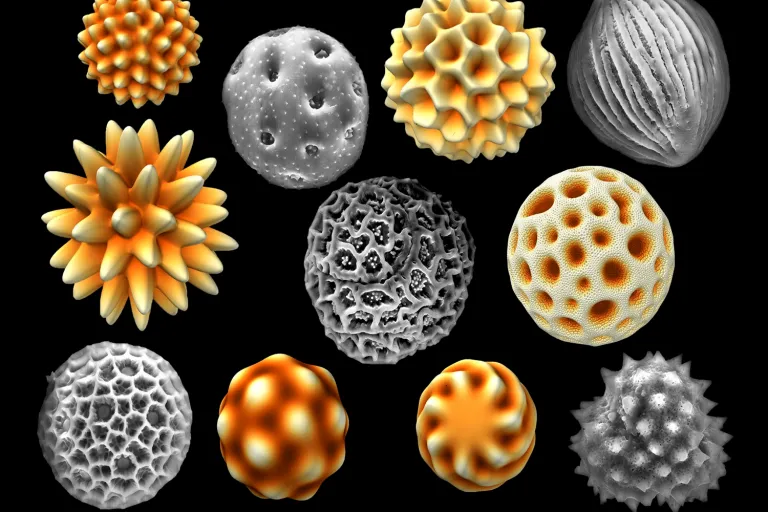
Table of Contents
Pollen and Pollination Resources & Activities
Pollination for Kids
Pollinators
Pollination by Wind
Allergies
Pollen Grains Under a Microscope
Let’s explore Pine trees, and how wind pollination helps them to reproduce.
- First, watch the video above.
- On your next nature walk, search for a Pine tree.
- Can you find male and female cones?
- Do you notice any yellow pollen on the male cones?
- Investigate the female cones. Which ones are receiving pollen, are closed or open dispersing seeds?
- Can you find a pine seed?
- Use your nature journal to record and sketch all you noticed.
- Draw the pine tree life cycle. Here’s a Primary/Early Elementary example of a Pine Tree Life Cycle, and here’s one for preschool.
